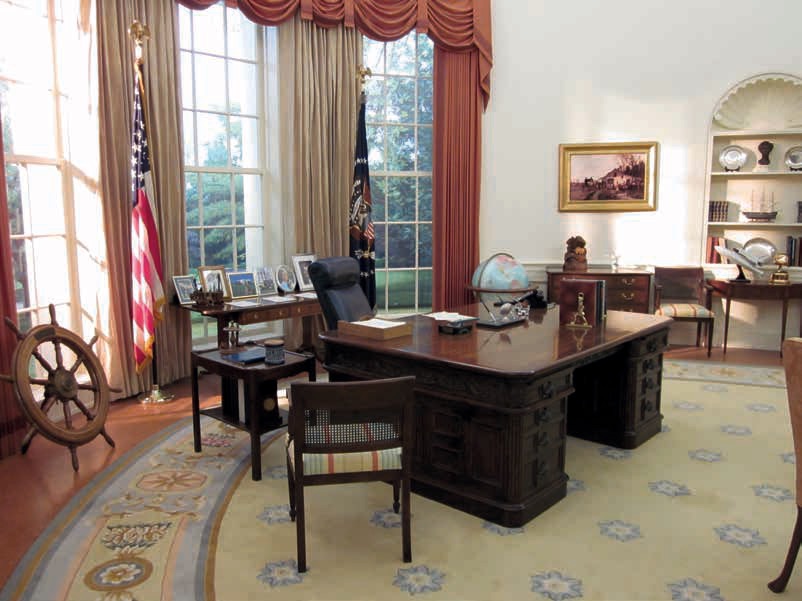Reconstruction and resistance
On material authenticity
DOI:
https://doi.org/10.48003/knob.119.2020.4.698Downloads

Abstract
Reconstructions of vanished buildings are new creations, lacking unity of time, place and function. Because of this, arguments based on the theoretical principles of heritage preservation – which advocate the preservation of age- and evidence-related values and of historical building substance – are rarely pertinent. Nevertheless, reconstructions are not without danger, given that they relativize the value of historical materiality, leading to the ‘dissolution of the real monument’ (Glendinning 2013).
The evaluation of material remnants of the past was destabilized by the Nara Conference on Authenticity in 1994. According to the Nara Document on Authenticity, the notion of authenticity should be evaluated from the perspective of the cultural context to which it belongs. Within that context a heritage object can be judged authentic based on credible historical sources and material, but also based on sources that attest to authentic aspects like function, design, tradition and spiritual or social value.
This conceptualization of authenticity serves to sideline material authenticity. The dominance of conceptual approaches has a negative impact on the way material heritage is dealt with. The devaluing of scientific, material sources places material heritage in a narrative context, thereby rendering it vulnerable to ideological framing.
References
S. Stroux, ‘“Kein ästhetisches Heil, außer im Alterswert?” Over het actuele Duitse reconstructiedebat’, Bulletin KNOB 114 (2015), 84-101, 94-95.
A. von Buttlar e.a., Denkmalpflege statt Attrappenkult. Gegen die Rekonstruktion von Baudenkmälern – eine Anthologie, Berlijn/ Bazel 2011. Zie echter ook: U. Hassler en W. Nerdinger (red.), Das Prinzip Rekonstruktion, Zürich 2010, waarin geluiden opgaan dat reconstructie juist een van de opgaven van monumentenzorg is. Vgl. S. Stroux e.a. (red.), Recomomo. Hoe echt is namaak, hoe dierbaar het origineel?, Delft 2011. Iets ouder, maar over de verhouding van monumentenzorgers tot reconstructie na volledige vernietiging door calamiteit gaat ook W. Denslagen, Nostalgie en modernisme in de monumentenzorg, Utrecht 1999.
M. Kloos, ‘Terugbouwen. Wat een vreselijk woord!’, Maandblad Amstelodamum 93 (2006) 1, 22-26; W. Vroom, ‘De Haringpakkerstoren: liever niet’, Maandblad Amstelodamum 93 (2006) 1, 27-29.
W. Denslagen, ‘Discordia turrium’, Maandblad Amstelodamum 93 (2006) 1, 3-10, 7. Zie ook G. Frankfurther, ‘Stadsherstel investeert in de toekomst van Amsterdam’, Maandblad Amstelodamum 93 (2006) 1, 19-21.
P. van Well, ‘De Haringpakkerstoren herrijst. Geschiedenis en herbouwplan’, Maandblad Amstelodamum 93 (2006) 1, 11-18, 15.
Kloos 2006 (noot 3), 25.
Vroom 2006 (noot 3), 27.
W. Nerdinger, ‘Warum wurde und wird rekonstruiert. Rekonstruktion als politische, ideologische oder ästhetische Handlung’, in: Hassler en Nerdinger 2010 (noot 2), 14-29. Vgl. W. Schoonenberg, ‘Without Reconstruction, No Inner City’, in: L. Deben, W. Salet en M.T. van Thoor (red.), Cultural Heritage and the Future of the Historic Inner City of Amsterdam, Amsterdam 2004, 133-148. Ook veel recenter vinden nog reconstructies plaats, waarbij de vraag op zijn plaats is of behoud niet mogelijk was geweest. V. van Rossem, ‘Cum laude’, Binnenstad 41 (2007), 223-224, 52-53.
Vgl. Stroux 2015 (noot 1), 92.
W.F. Denslagen, Omstreden herstel. Kritiek op het restaureren van monumenten. Een thema uit de architectuurgeschiedenis van Engeland, Frankrijk, Duitsland en Nederland (1779-1953), Den Haag 1987; A. Hubel, ‘Der “Generalkonservator” Alois Riegl. Verdichtung des Denkmalbegriffs durch die Erfahrungen in der Praxis’, in: A. Hubel, Kunstgeschichte und Denkmalpflege. Ausgewählte Aufsätze. Festgabe zum 60. Geburtstag, Petersberg 2005, 217-230.
Vgl. W. Denslagen, ‘Authenticiteit en spiritualiteit’, Bulletin KNOB 109 (2010) 4, 135-140, 138; H. Ronnes, ‘Authenticiteit en authenticiteitsbeleving. De presentatie en receptie van museum Paleis Het Loo’, Bulletin KNOB 109 (2010) 5, 190-199.
M. Glendinning, The Conservation Movement. A History of Architectural Preservation, Abingdon 2013, 423 noemt dit ‘dissolution of the real monument’, en 429, ‘dissolving authenticity’. Zie ook M. Kuipers, ‘Authenticiteit versus Attrappenkult?’, in: Stroux e.a. 2011 (noot 2), 8-11, 10-11.
Het Nara Document on Authenticity (1994) zegt in artikel 13: ‘Depending on the nature of the cultural heritage, its cultural context, and its evolution through time, authenticity judgements may be linked to the worth of a great variety of sources of information. Aspects of the sources may include form and design, materials and substance, use and function, traditions and techniques, location and setting, and spirit and feeling, and other internal and external factors. The use of these sources permits elaboration of the specific artistic, historic, social, and scientific dimensions of the cultural heritage being examined.’ Vgl. G. van Tussenbroek, De mythe van de onveranderlijkheid. Veranderende opvattingen over Amsterdamse monumenten, Amsterdam 2015, 20.
Over monumentwaarden zie: D. Boesler, ‘Werte und Wertewandel in der Denkmalpflege’, Die Denkmalpflege 69 (2011) 1, 5-10.
UNESCO , Operational Guidelines for the Implementation of the World Heritage Convention, 27 (versie 10 juli 2019); Denslagen 2010 (noot 11), 138.
D.J. de Vries, Verbrokkeld verleden, Leiden 2001, 3-4.
Vgl. A. de Swaan, ‘The Fetish of Authenticity’, in: Deben, Salet en Van Thoor 2004 (noot 8), 35-42, 39: ‘Without this fetish of authenticity the theoretical foundations of the preservation movement are not very strong and they have been further underminded by the emergence of much improved techniques of reconstruction that allow only experts to see the difference.’
B. Mulder, ‘Het reconstrueren van gebouwd erfgoed’, in: Stroux e.a. 2011 (noot 2), 46-51, 48; W. de Jonge, ‘Oorspronkelijkheid versus reconstructie – waar ligt de grens? Een verkenning in de restauratiepraktijk van monumenten’, in: Stroux e.a. 2011 (noot 2), 12-19.
D. MacCannell, ‘Staged Authenticity: Arrangements of Social Space in Tourist Settings’, American Journal of Sociology 79 (1973) 3, 589-603.
Die Dresdner Frauenkirche. Geschichte ihres Wiederaufbaus, uitgegeven als Dresdner Hefte 20 (2002), nr. 71.
Zie ook Stroux 2015 (noot 1).
Denslagen 2010 (noot 11).
Published
How to Cite
Issue
Section
Articles
License
Copyright (c) 2020 Gabri van Tussenbroek

This work is licensed under a Creative Commons Attribution 4.0 International License.





